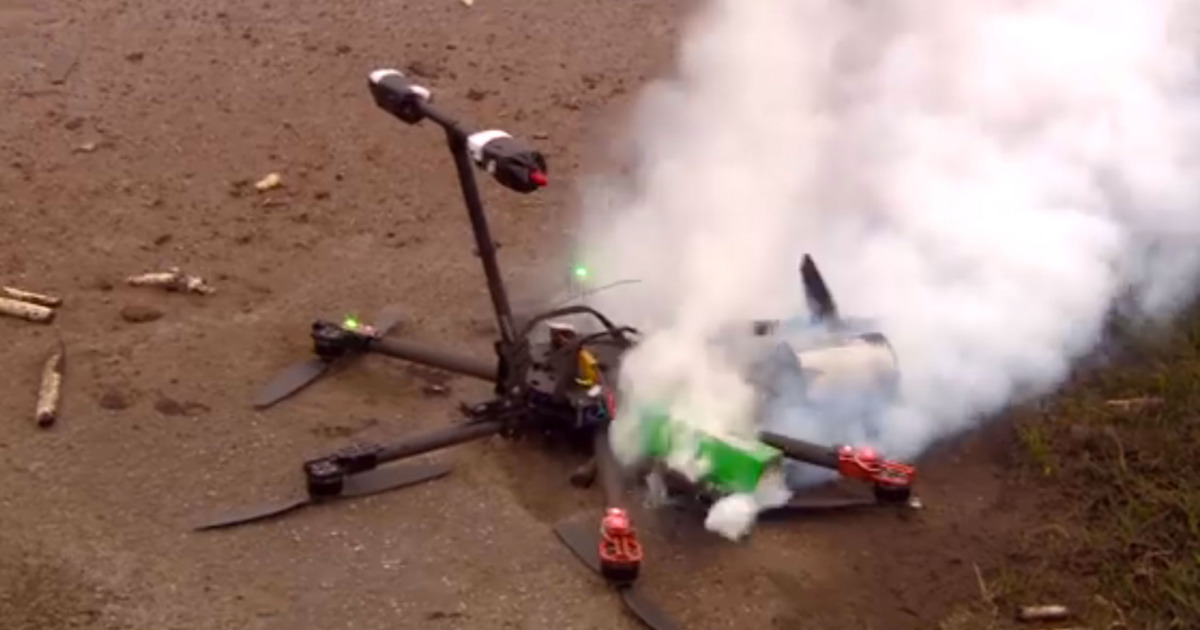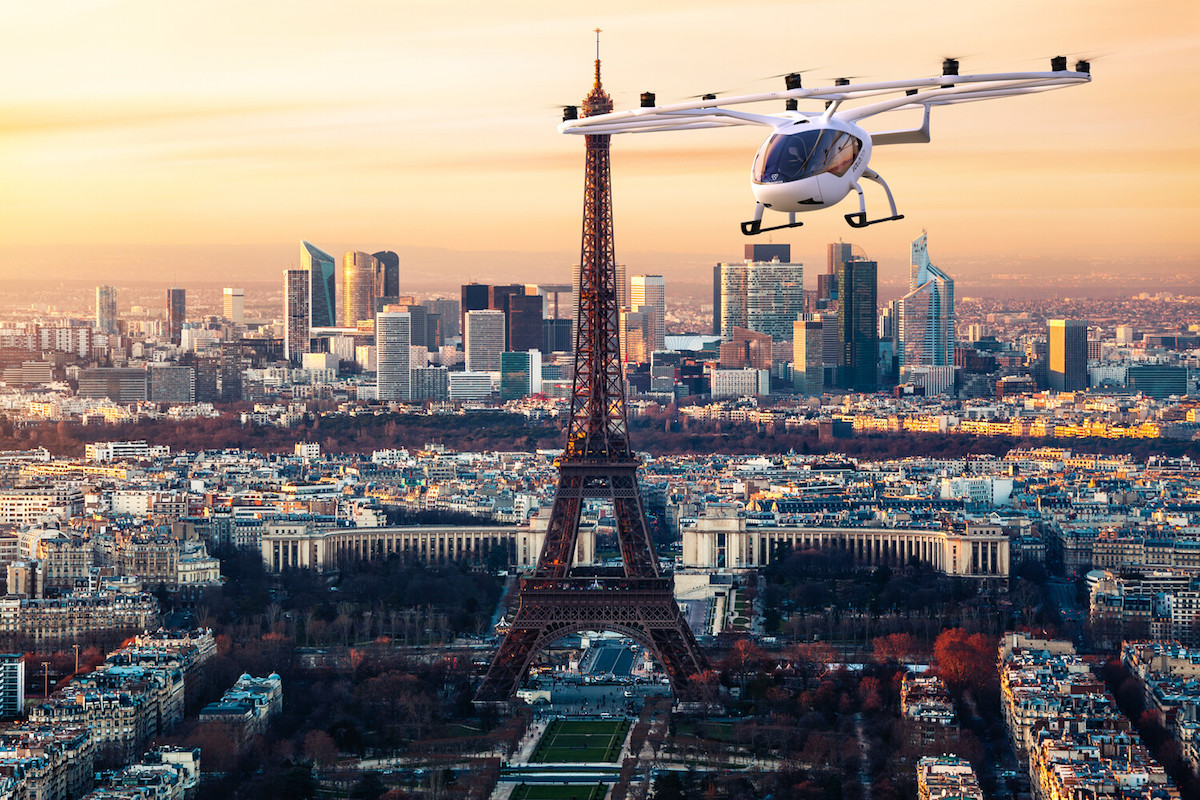Drone crash in Paris: A seemingly routine technological mishap quickly escalated into a complex event involving investigations, regulatory scrutiny, and public debate. This incident highlighted the growing concerns surrounding the safety and regulation of unmanned aerial vehicles (UAVs), particularly in densely populated urban areas. The immediate aftermath saw emergency responders rush to the scene, assessing damage and initiating preliminary investigations.
Understanding the specifics of this crash—from the drone’s specifications and flight path to the legal repercussions and public reaction—is crucial for improving drone safety protocols worldwide.
This analysis delves into the specifics of the Paris drone crash, exploring the technological factors, regulatory implications, and societal impact. We examine the drone’s capabilities and the potential causes of the malfunction, analyze the existing regulatory framework and its limitations, and assess the public and media response. Ultimately, we aim to understand how this event can inform the development of more robust safety measures and preventative strategies for future drone operations.
That drone crash in Paris really highlights the risks involved in drone operation, especially in crowded areas. It makes you think about the meticulous planning that goes into a large-scale drone show like the one at the orlando drone show , where safety protocols are paramount. Hopefully, incidents like the Paris crash will lead to better regulations and safer drone practices everywhere.
Drone Crash in Paris: A Comprehensive Analysis
A drone crash in Paris serves as a stark reminder of the evolving challenges presented by unmanned aerial vehicles (UAVs), or drones, in densely populated urban environments. This analysis delves into the immediate aftermath, technical specifications, regulatory implications, public reaction, technological advancements, and long-term preventative measures to address such incidents.
Immediate Aftermath of the Crash

The immediate scene following the drone crash likely involved a flurry of activity. Emergency responders, including police and potentially fire services, would have been dispatched to secure the area and assess the situation. Initial reports, possibly from eyewitnesses or nearby surveillance cameras, would have provided preliminary details about the location of the crash and the extent of any damage.
A timeline of events, from the initial impact to the arrival of emergency services and commencement of investigations, would be crucial in understanding the sequence of events. For instance, if the drone impacted a building, initial assessments would focus on structural integrity and the potential for further collapse. If injuries were involved, immediate medical attention would have been prioritized.
The scene would have been secured to allow for a thorough investigation.
That drone crash in Paris really highlights the risks of widespread drone use, right? It makes you wonder about the safety protocols in place for companies like Amazon, especially considering their ambitious plans for amazon drone delivery locations. Hopefully, incidents like the Paris crash will push for stricter regulations and improved safety features across the board, preventing future accidents.
Drone Specifications and Operation, Drone crash in paris

Understanding the drone’s specifications and operational parameters is vital in determining the cause of the crash. Identifying the drone’s manufacturer, model, and its capabilities – such as maximum flight time, range, and payload capacity – will provide valuable context. Data regarding the drone’s flight path prior to the crash, including altitude, speed, and any unusual maneuvers, could be retrieved from the drone’s flight data recorder (if equipped) or from witness accounts.
Potential causes of the malfunction could range from mechanical failure (e.g., motor malfunction, propeller failure) to software glitches (e.g., GPS errors, control system failures) or pilot error (e.g., improper operation, loss of control).
Regulatory and Legal Ramifications

The incident highlights the need for robust drone regulations. Existing regulations in Paris and France concerning drone operation, including flight restrictions in specific zones, altitude limits, and required certifications for operators, will be examined. A comparison with other notable drone accidents globally will illustrate common causes and regulatory gaps. The potential legal consequences for the drone operator, such as fines, license revocation, or even criminal charges depending on the severity of the incident and any resulting damages or injuries, are important considerations.
A hypothetical improved regulatory framework could incorporate stricter licensing requirements, mandatory flight training, and advanced safety technologies for all drones operating within urban areas. This framework might also include clearer guidelines on liability in case of accidents, making it more transparent and efficient.
Public Reaction and Media Coverage
Public reaction to the drone crash would likely be varied, reflecting the potential for both fear and fascination surrounding drone technology. Social media platforms would offer a platform for immediate reactions, ranging from expressions of concern to discussions about drone safety. News reports would shape public perception, and it’s important to analyze the narratives presented for potential biases or inconsistencies in the coverage.
A comparison with media portrayals of other significant events in Paris will show how the drone crash fits into the city’s broader news landscape and public discourse. For example, a comparison to a terrorist attack or a major traffic accident would reveal differences in media focus and public sentiment.
Technological and Safety Implications
The current state of drone technology and its inherent risks need to be addressed. Safety features such as GPS systems, obstacle avoidance sensors, and redundant flight controllers are critical for mitigating crashes. Improved safety protocols could be implemented in drone operation, such as mandatory pre-flight checks, regular maintenance, and operator training programs. Better design features could include fail-safe mechanisms that ensure a safe landing in case of system failures.
| Model Name | Manufacturer | Autonomous Features | Emergency Protocols |
|---|---|---|---|
| DJI Mavic 3 | DJI | Obstacle avoidance, automatic return-to-home | Low-battery alerts, failsafe landing |
| Autel Evo II Pro | Autel Robotics | Obstacle sensing, precision landing | Geofencing, emergency stop |
| Parrot Anafi USA | Parrot | Follow me, point of interest | Return-to-home, low-power warning |
Long-Term Impacts and Prevention
The long-term impact of the drone crash could affect public perception of drone technology, potentially leading to increased regulations or stricter safety measures. Improved drone safety requires a multi-pronged approach, including technological advancements and enhanced operational procedures. Technological solutions such as improved GPS systems with enhanced accuracy and reliability, more sophisticated obstacle avoidance systems using advanced sensors (LiDAR, radar), and reliable remote kill switches that can be activated in emergencies are crucial.
Furthermore, the development and implementation of standardized safety protocols, regular maintenance checks, and operator training programs will also contribute to preventing future accidents. The incorporation of artificial intelligence for autonomous flight management and real-time risk assessment could further enhance drone safety.
Last Word

The drone crash in Paris serves as a stark reminder of the potential risks associated with increasingly sophisticated drone technology. While offering significant benefits across various sectors, UAVs also present challenges that demand careful consideration and proactive solutions. From strengthening regulatory frameworks to improving drone design and implementing advanced safety features, a multi-faceted approach is crucial to mitigate future accidents.
That drone crash in Paris got everyone talking about safety regulations, right? It made me think about the dangers of drones, especially for people on the ground. Check out this article about a boy hit by a drone – it really highlights the potential for accidents. The Paris incident, while different, emphasizes the need for better drone controls to prevent similar situations.
This incident underscores the urgent need for continuous dialogue among stakeholders, including manufacturers, regulators, and the public, to ensure responsible and safe integration of drone technology into our airspace.
FAQ Section: Drone Crash In Paris
What type of damage was caused by the drone crash?
The extent of damage varied depending on the location and force of impact. This could range from minor property damage (e.g., broken windows) to more significant structural damage. Potential injuries to people or animals would also need to be assessed.
What were the initial reactions on social media?
Social media reactions were likely a mix of shock, concern, and discussion about drone safety regulations. Some might have shared videos or images from the scene, while others debated the causes and consequences of the incident.
How long did it take for emergency services to arrive?
Response times would depend on the location of the crash and the availability of emergency services. Ideally, the response would be swift, but this can vary depending on factors like traffic and other ongoing emergencies.
What are the potential long-term consequences for the drone industry in Paris?
Long-term consequences could include stricter regulations, increased insurance costs for drone operators, and changes in public perception regarding the safety of drone technology.